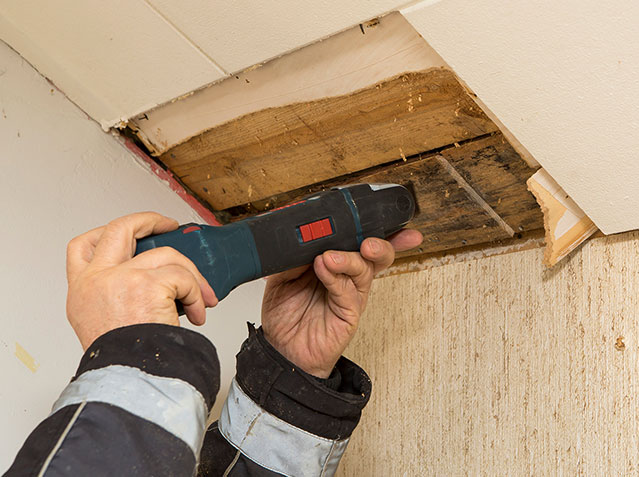What Is Mold And Why Is It Bad?
Mold is considered a fungus and is naturally occurring in the environment. Because mold needs moisture to survive, it’s important to catch water issues in the early stages because mold can start to spread in as little as 24 – 48 hours. How this happens is because mold emits spores and spores spread. These spores are microscopic particles that can be as small as a single cell. Mold spores become airborne and float through the air where they are inhaled or settle on surfaces. Movement causes these spores to stay airborne making it easier to be inhaled. The air conditioning system also helps to distribute mold spores throughout your home or office.

Not all mold growths are visible. When you see mold growing on your walls or other places in your home it’s easy to see that you have an issue, but mold can also grow in places you can’t see making it even more dangerous. Mold can grow between your walls because of a small undetected leak or something as big as a flood. Mold can also grow inside your air conditioner and ductwork making the spores dispersed around your home even more of an issue. Regular air conditioner maintenance and having your ductwork cleaned every 2 – 5 years can help in this area.
While most molds may not be toxic, it can still cause health issues for you and your family. As with all molds, the health effects come from the inhalation of the mold. The health risks are determined by the concentration levels or the amount in the air. A minimal presence may not pose much of a health risk or even be detected at all, but a higher level can be of great risk for severe health issues. There is more of a concern for the very young, the elderly and people with compromised immune systems or that are prone to allergies, however, spores that grow in large quantities can be dangerous, and in some cases, deadly.
If the conditions are left as they are, possible ailments range from a number of mild to severe symptoms including:
- L Pneumonia-like symptoms
- Eczema
- Headaches
- Nasal Stuffiness
- Congestion
- Asthma
- Fatigue
- Watery Eyes
- Throat Irritation
- Hives
- Depression
- Sneezing
- Plugged Ears
- Itchy Skin
- Rash
